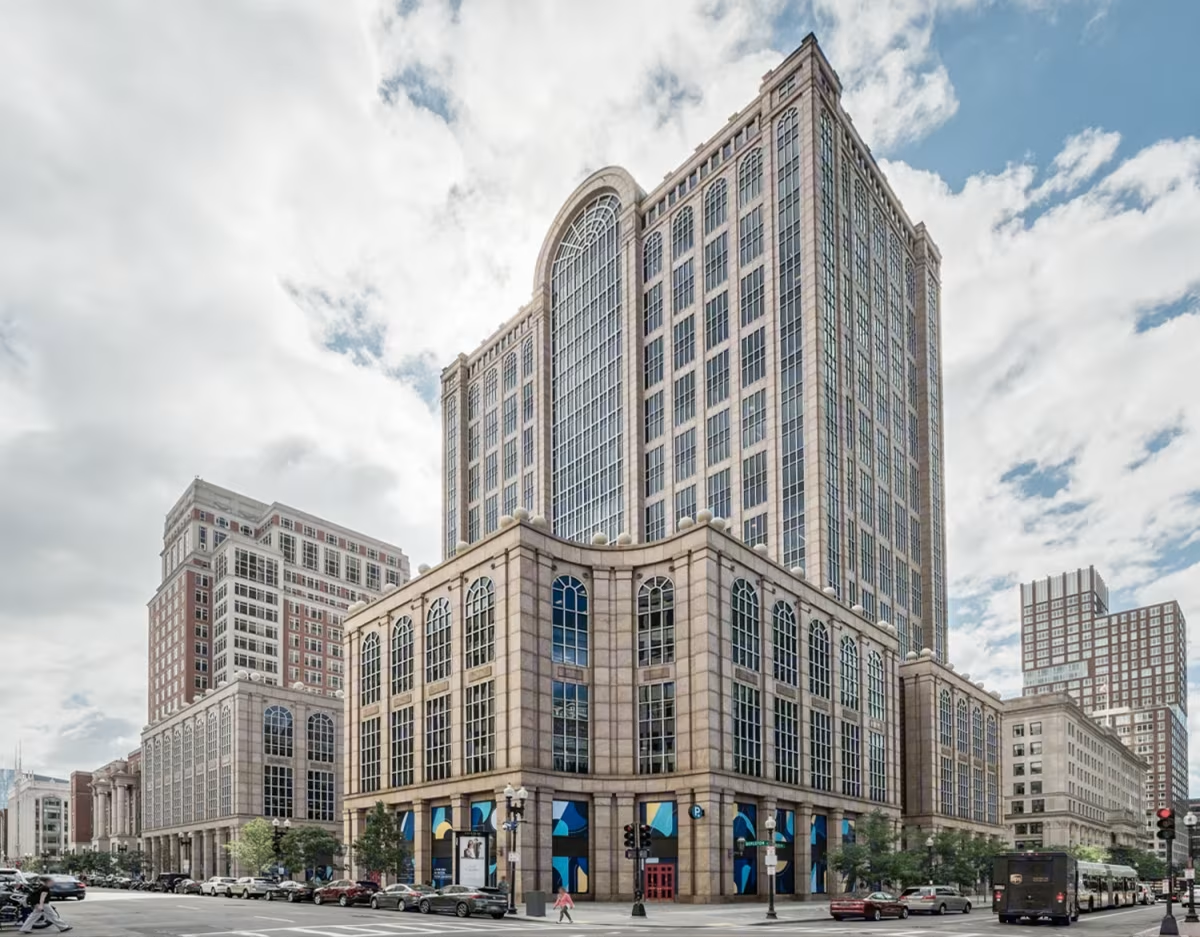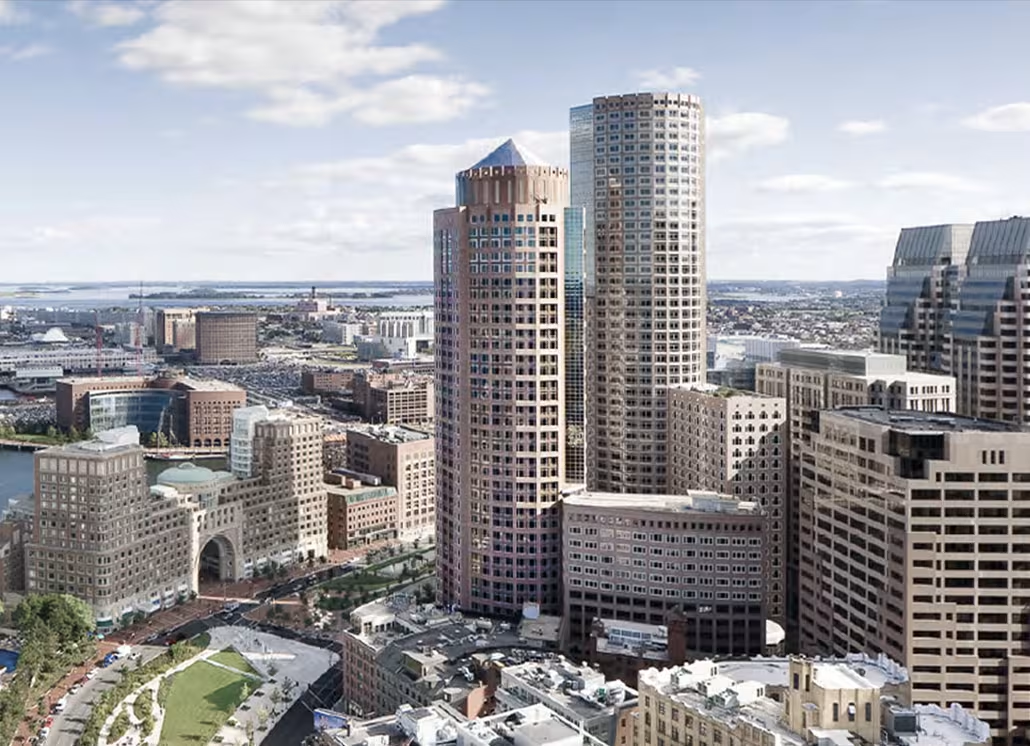500 Boylston Street vs Two International Place Building


Comparing the 500 Boylston Street and the Two International Place Building is interesting because they both stand in Boston, MA, and were completed within 3 years of each other, but they were designed by different architects.
This offers a unique glimpse at how rival designers approached projects in the same city during the same era.
Height & Size
The Two International Place Building is clearly the larger tower of the two, both in terms of height and number of floors. It rises to 538ft (164m) with 35 floors above ground, while the 500 Boylston Street reaches 364ft (111m) with 25 floors above ground.
Of course, each project may have faced different briefs or regulatory constraints, which we don't really know about and could also explain the outcome.
Architectural Style
Both the 500 Boylston Street and the Two International Place Building were designed in line with the aesthetic conventions of the Postmodernism style.
The Two International Place Building was designed at a moment when the Postmodernism style was already in decline, making it more of a lingering expression of the movement. In contrast, the 500 Boylston Street was built when the style still carried greater cultural weight.
Uses
Both the 500 Boylston Street and the Two International Place Building were designed to serve as commercial towers, and that has remained their main use since their completion, serving similar roles in the urban fabric.
The 500 Boylston Street also provides 1000 parking spaces.
Structure & Facade
The two towers rely on different structural systems, reflecting distinct engineering strategies.
The 500 Boylston Street uses a Frame structural system, which relies on a regular grid of columns and beams to sustain its weight, while the Two International Place Building uses a Framed Tube In Tube system, that combines a strong central core with a perimeter tube of columns.
Yet, when it comes to their facade, they both employed the same solution, a Modular facade.
A modular facade is made of prefabricated panels, sometimes resembling stone or masonry, combined with smaller windows. It provides variety while maintaining efficiency in installation.
| 500 Boylston Street | Two International Place Building | |
|---|---|---|
| Philip Johnson/Burgee Architects | Architect | Johnson/Burgee Architects |
| 1989 | Year Completed | 1992 |
| Postmodernism | Architectural Style | Postmodernism |
| Commercial | Current Use | Commercial |
| 25 | Floors Above Ground | 35 |
| 111 m | Height (m) | 164 m |
| Frame | Structure Type | Framed Tube In Tube |
| Steel | Vertical Structure Material | Steel |
| Poured Concrete Over Metal Decking | Horizontal Structure Material | Reinforced Concrete |
| No | Facade Structural? | Yes |
| Hines Interests Limited Partnership | Developer | The Chiofaro Company |
| Le Messieur | Structural Engineer | McNamara/Salvia, Inc. |
| MA | State | MA |
| Boston | City | Boston |
| 500 Boylston Street | Address | 2 International Place |